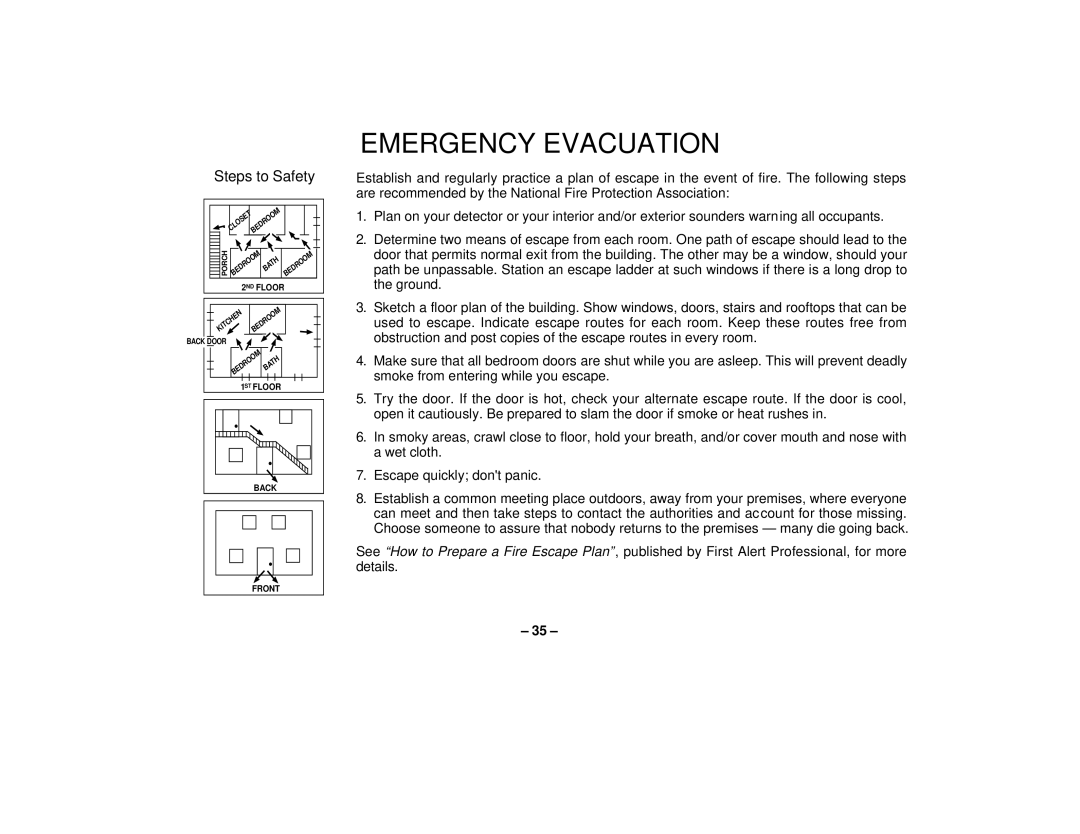FA162C specifications
The First Alert FA162C is a versatile and highly efficient fire extinguisher designed for home and business safety. Engineered to tackle multiple types of fires, this model ensures peace of mind with its robust features and innovative technologies.One of the standout characteristics of the FA162C is its multi-purpose capability. It is classified to fight Class A, B, and C fires, making it suitable for use against ordinary combustibles like wood and paper, flammable liquids like grease and gasoline, and electrical fires involving live wires. This versatility is critical in everyday scenarios where the nature of a fire can vary, allowing users to handle emergencies effectively and safely.
This fire extinguisher features a durable metal construction, which enhances its longevity and reliability. The professional-grade valve and easy-to-pull safety pin provide user confidence during high-pressure moments. An important aspect of the FA162C is its pressure gauge, which allows users to easily monitor the readiness of the extinguisher at a glance. This feature is crucial for ensuring that the unit is always prepared for emergency situations.
The FA162C is equipped with a wide nozzle that creates a strong and effective stream, which can reach up to 10 feet, allowing users to maintain a safe distance from the fire while effectively combating it. Additionally, the lightweight design ensures ease of handling, making it manageable even for individuals who may not have experience using fire extinguishers.
For added safety, the FA162C comes with clear operating instructions directly on the label, promoting ease of use. First Alert also emphasizes the importance of regular maintenance, advising users to check their extinguishers monthly to ensure they remain in optimal condition.
With a compact design that offers portability, the First Alert FA162C can be conveniently placed in various locations, such as kitchens, garages, or vehicles. Overall, the First Alert FA162C epitomizes reliability and user-friendly design, making it a valuable addition for anyone looking to enhance their safety preparedness against fire hazards.

